Excellence by Everyday Improvement
JPM Farms earns award for superior conservation and cattle production.
October 1, 2023
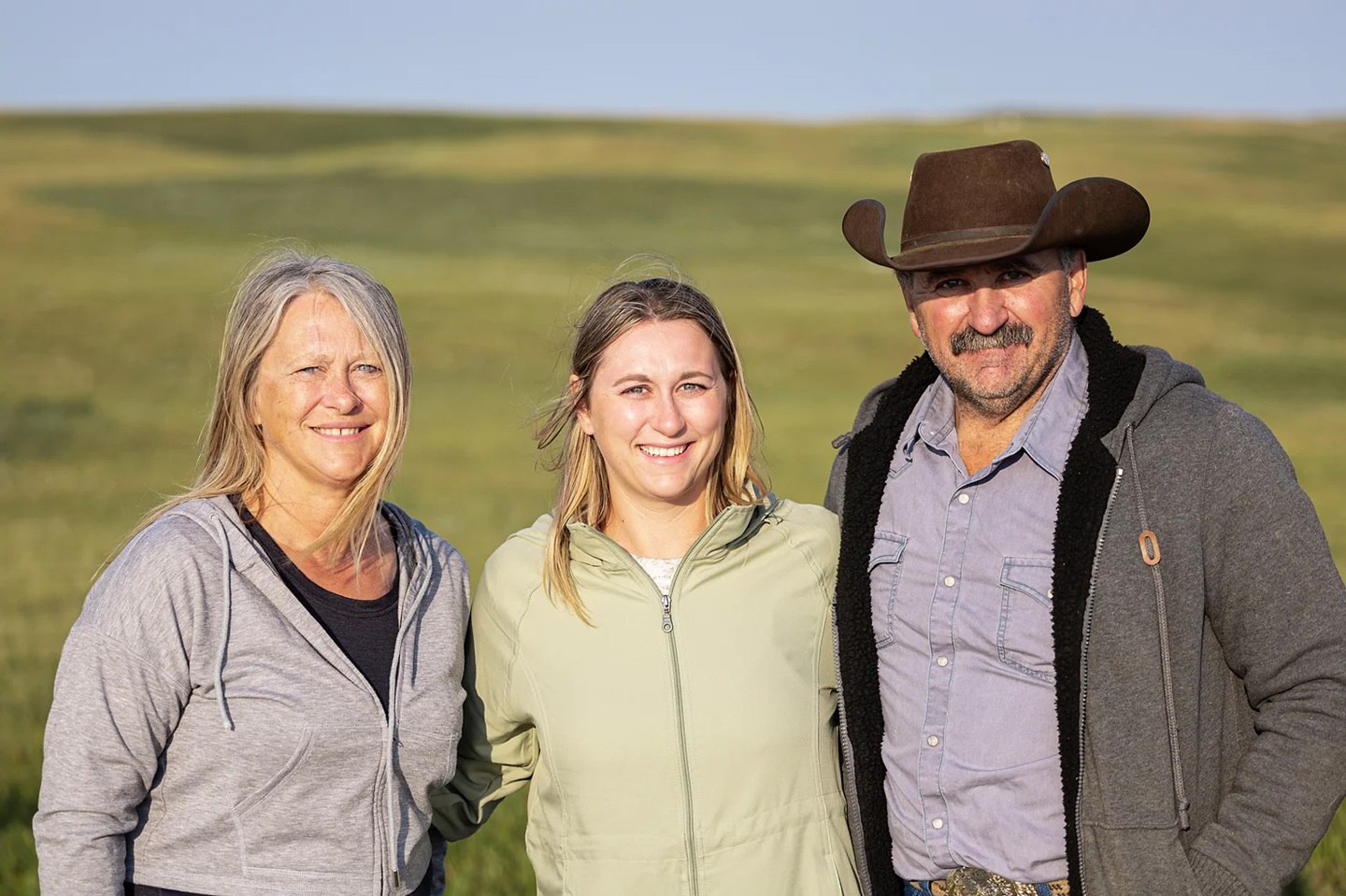
JPM Farms
Marlene Monvoisin (from left), Josee Monvoisin-Garner and Jean Paul Monvoisin
Jean-Paul and Marlene Monvoisin with their adult children, Colton Monvoisin and Josee Monvoisin-Garner, operate the quality-focused seedstock Angus ranch in the rolling hills near Parkbeg, Saskatchewan.
They lean into viable sustainability, with immense focus on the environment and a long-time partnership with Ducks Unlimited Canada. The perpetually progressive learners naturally work hard to improve their cow herd and grasslands.
“Our philosophy is to treat the land, the cattle and our family the best we can every day to make it a better day than the one before,” Marlene says.
Outstanding results earned JPM Farms the Certified Angus Beef (CAB) 2023 Canadian Commitment to Excellence Award. The Monvoisin family was recognized at the CAB Annual Conference in Las Vegas, Nev., in September.
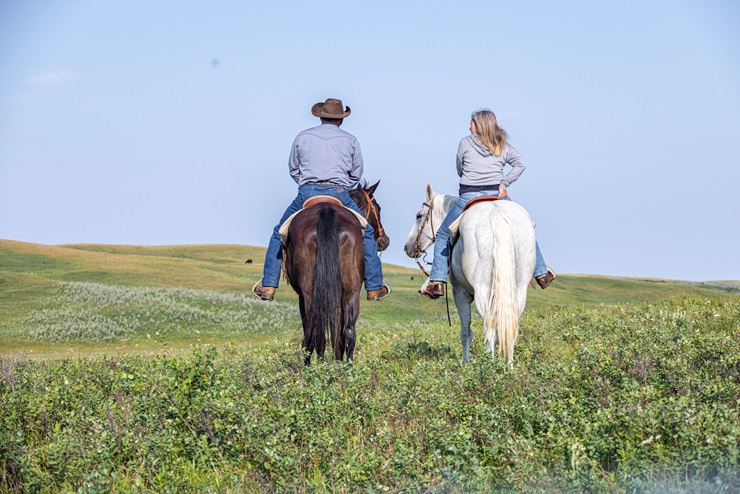
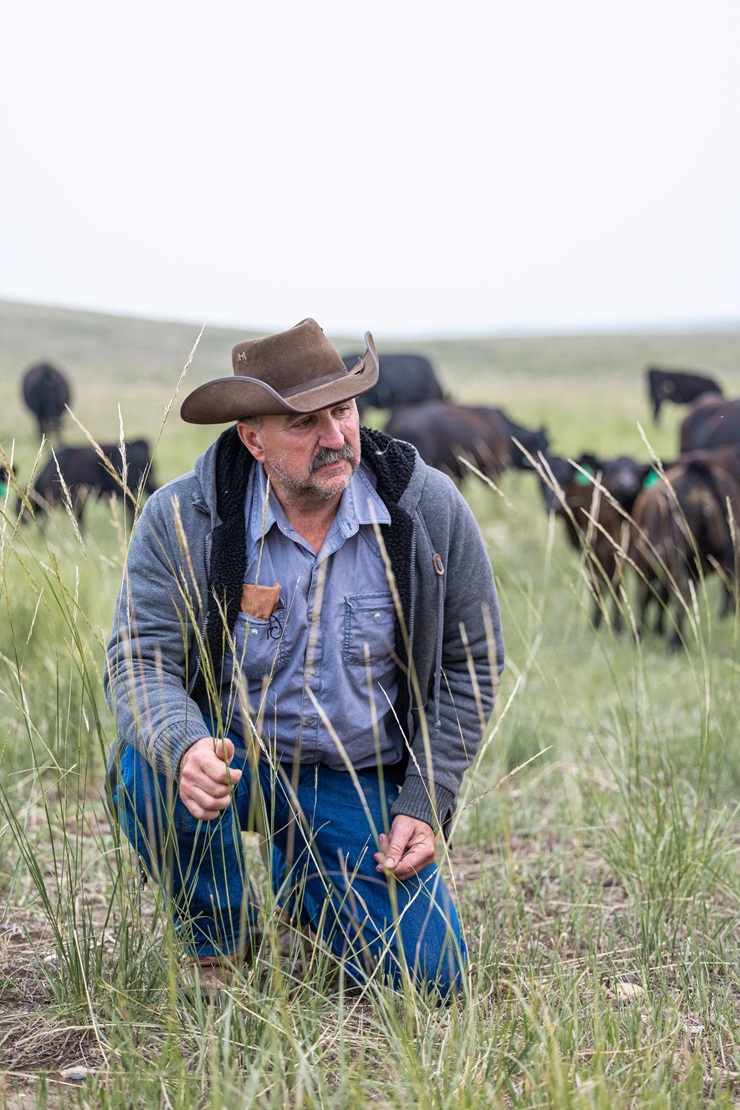
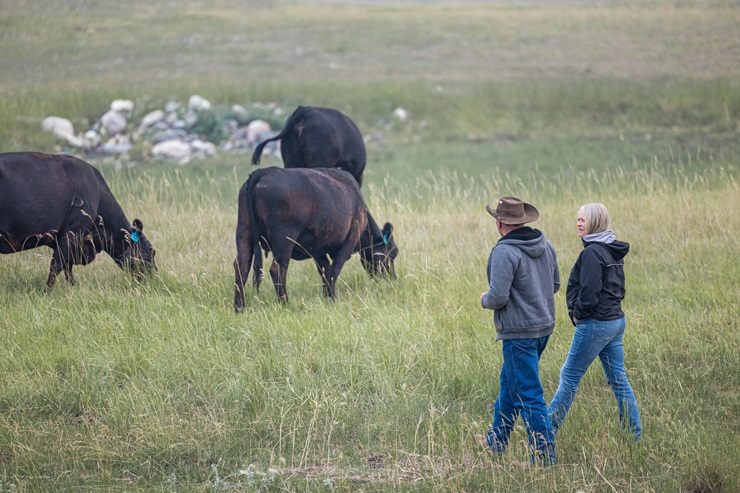
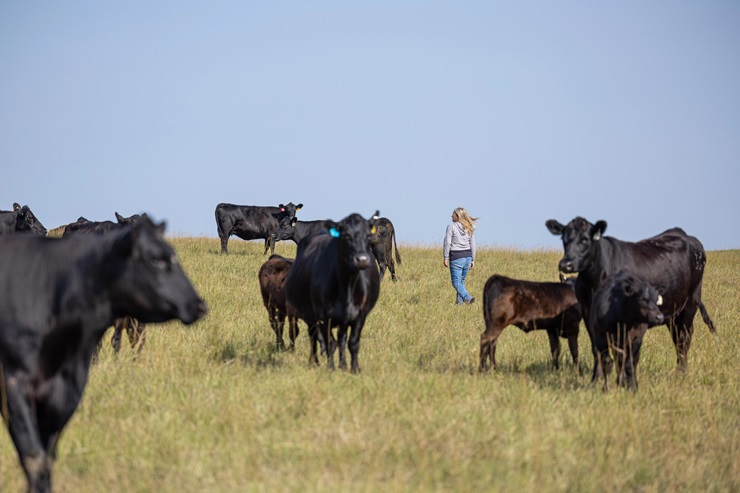
Destination ranchland
Just 100 miles north of the Montana border, JPM Farms sits in the heart of the Missouri Coteau, a hilly plateau that parallels the river southeastward into the Dakotas — the “duck factory,” as Jean-Paul says.The ecosystem here depends on wildlife. The Monvoisins credit waterfowl, other birds and deer with helping increase sustainability in their native grassland pastures.
“It’s rolling hills, with natural, native grass all over,” Jean-Paul explains. “There are too many rocks, too many hills — it’s meant for cattle. There’s no other use for this land.”
Except for sharing it wisely. The symbiotic relationship between grazing cattle and wildlife is clear in the “green years” of abundant moisture that fosters vegetation growth.
“Ensuring that you have a resilient, highly functioning soil provides biodiversity across the landscape — and distribution of landscape dynamics needed for different wildlife species and cattle grazing resources,” says Ross MacDonald, conservation programs specialist at Ducks Unlimited Canada. “If you want a healthy, functioning wildlife population, you need healthy, functioning habitats. When we’re green and wet here, we have a lot of pothole wetlands and great upland vegetation that supports nesting habitat for waterfowl. That’s also what allows ranchers in this area to thrive.”
Partnering with Ducks Unlimited promotes improvement in JPM Farms’ working grasslands for environmental and ranching wins.
“Ducks Unlimited has been a huge help to us and a benefit to our operation,” Jean-Paul says. “We have a half section that we’re going to be putting cattle on this year, and we haven’t had cattle on it for two years.”
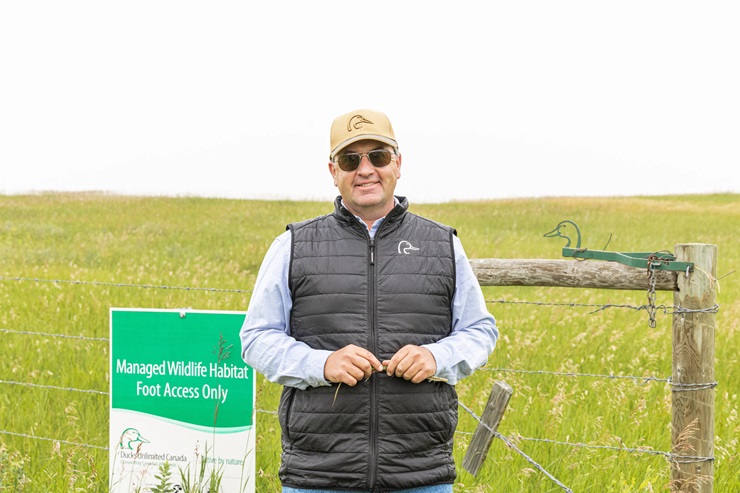
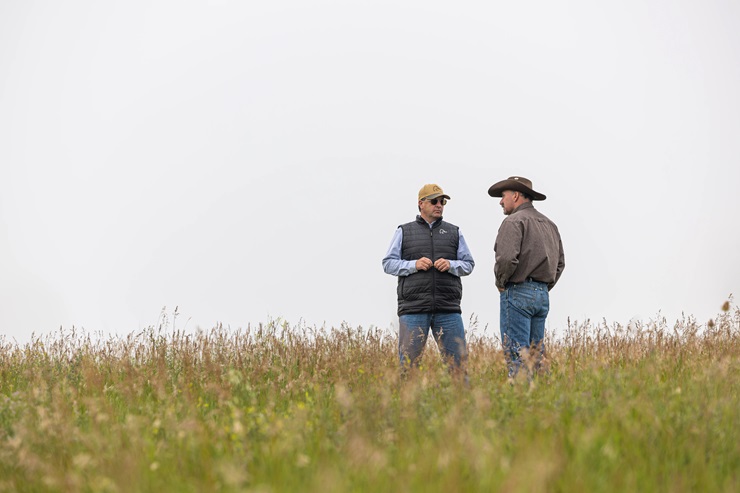
Conservation and cows
Cattle are good for the grass.“I don’t think there’s another animal that could be as efficient in maintaining the landscape,” Jean-Paul says.
Without them, dormant native grasses could become a fire hazard.
Grazing management underpins the Monvoisins’ operation, and that includes resting pastures. The family balances stocking rates to leave enough grass in hopes of a good start next year.
Careful not to push the native grasses too hard, JPM Farms strictly limits grazing to maintain sustainability. The challenge requires constant monitoring.
“[Jean-Paul] always says we’re only six weeks away from a drought,” Marlene adds.
The green years come and go. Accustomed to a drier climate, the Coteau is typically arid to semiarid with little rain or snow. While native grasses tolerate drought more easily than other varieties, all pastures run the risk of grass quality deteriorating quickly.
Drought also affects water availability. Without adequate snow in the winter, ranch ponds will not provide drinking water in grazing months. Even if the Monvoisins aren’t yet forced to haul water, they still have to monitor the pond sources for sulfates that can make water undrinkable for cattle.
Ever looking to improve, the family began a project within the Farm and Ranch Water Infrastructure Program to construct a pipeline that carries water to remote pastures. As those are on conservation easements, the water lines help distribute grazing and give purpose to Coteau land otherwise unusable for ranching.
“It’s big and uninterrupted, and we’re so lucky we get to live here,” Marlene says. “There’s a lot of nature, a little bit of heaven on earth.”
Feet, function and selection
Their cow herd has adapted greatly to the big hills and rocky climate since Jean-Paul’s grandfather brought registered black Angus cattle to Saskatchewan in 1941.
Cattle must walk across the large summer pastures where sound feet determine survival, putting a premium on structural correctness.
“In the long run, you have to have good feet,” Jean-Paul says. “That’s the most important thing I’ve found.”
The wide-open country says a cow has to be maternal, Marlene adds.
“The mother cow is the biggest way you’re going to be profitable,” she says. “A good cow will always produce a good calf. Your whole goal is always to produce the best quality females you can.”
JPM Farms relies on their females to produce the bulls their customers need, as well as calves with superior carcass quality and red meat yield that the Monvoisins market independently.
They dial in on performance genetics and convenience, too.
“Animals that aren’t going to give ’em any grief,” Jean-Paul says.
Ideally, the calves will be moderate birth weight and grow quickly, with the only assistance that of a mother cow that milks well. Achieving that ideal calf can be trial and error as new genetics are introduced.
Using an unproven bull can make breeding decisions more challenging, but the JPM team always looks for proof in the maternal evaluation of daughters.
“A lot of times you buy a bull and don’t really know what you got until about three years when these bred heifers are milking,” Jean-Paul says. “It’s a long road and you’ve just got to keep picking away to make the right breeding decisions.”
That selection path carries over to JPM Farms’ bull business, as well.
“The biggest compliment that I can get as a purebred producer is to see my customers’ calf weaning weights go up a year or two after they start using our bulls,” Marlene explains.
She says the best way to improve a herd and profitability is culling from the bottom end and build the top end. They are doing it in their own herd using expected progeny differences (EPDs), and strive to help customers do likewise.
With better bulls come higher weaning weights and greater carcass quality, all adding dollars.
“It’s a huge part of sustainability,” Jean-Paul says. “We have to get paid for what we’re doing.”
Incorporating embryo transfer and a robust data collection system, the Monvoisins are geared toward progress. They are also committed to education, both in explaining EPDs to customers and learning for themselves.
Jean-Paul and Marlene travel to other Angus ranches to spend time studying different genetics and attend customers’ brandings to see JPM genetics at work. At times, education means evaluating sires in the United States before they are available for Canadian ranchers.
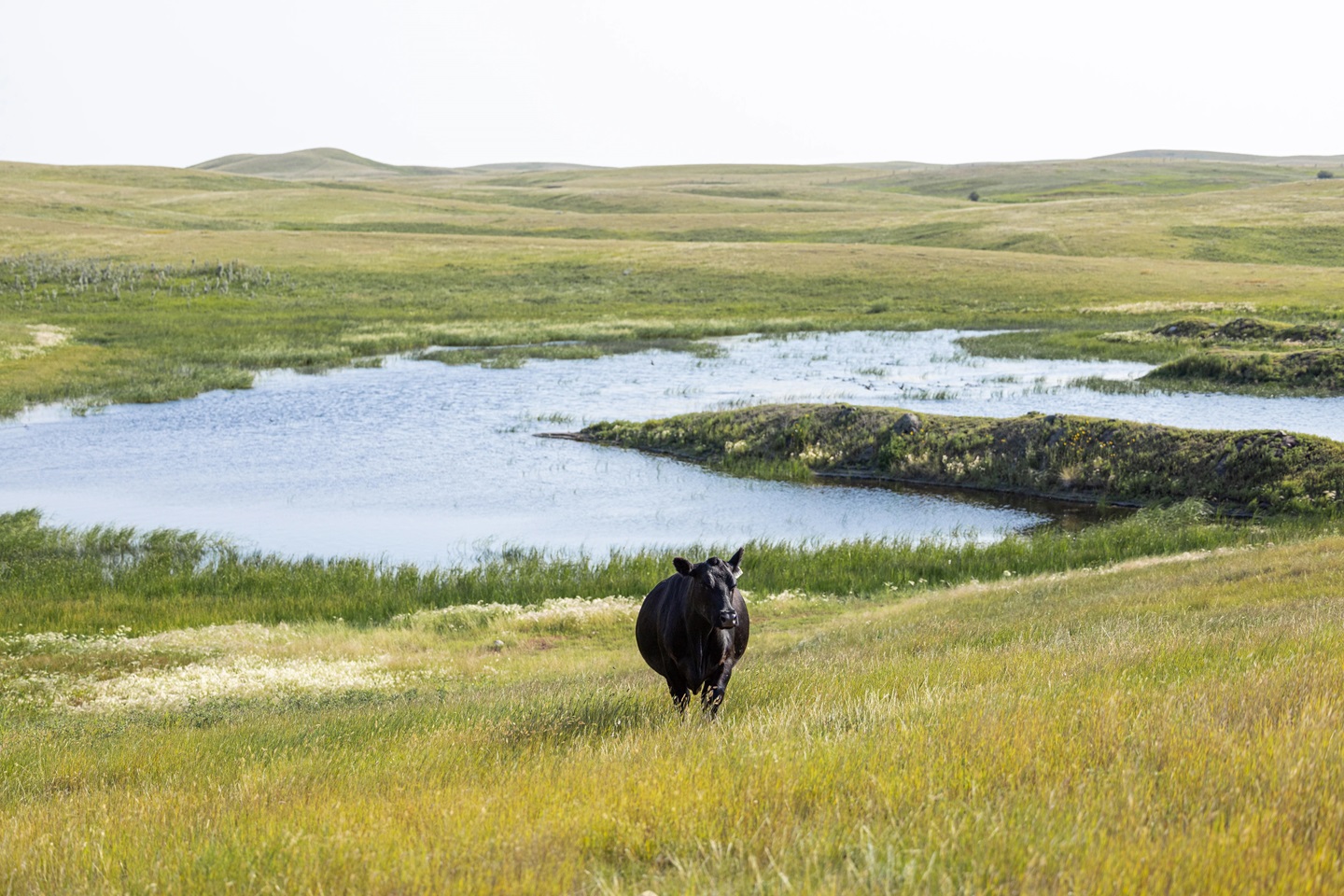
The goal, not the end
It seems to be a recipe for success: careful consideration of Angus genetics, continuing education, serving customers as bull buyers or helping them market their calves.“I feel ownership in the Certified Angus Beef brand,” Marlene says. “There’s immense pride in having Angus cattle in our herd and producing Angus for our customers, ourselves and the consumer.”
But excellence?
“I don’t think anybody can ever say they’re the best at anything. Excellence is a goal, not the end,” Marlene says. “It’s all the extra work that you do to be successful or just to make your own operation better.”
At JPM Farms, that means approaching each day with the attitude that you will make things better than they were yesterday — for your cattle, the land and how you treat other people. Going the extra mile and working hard at what you love.
Editor's note: Photos by Kylee Kohls Sellnow, Certified Angus Beef.
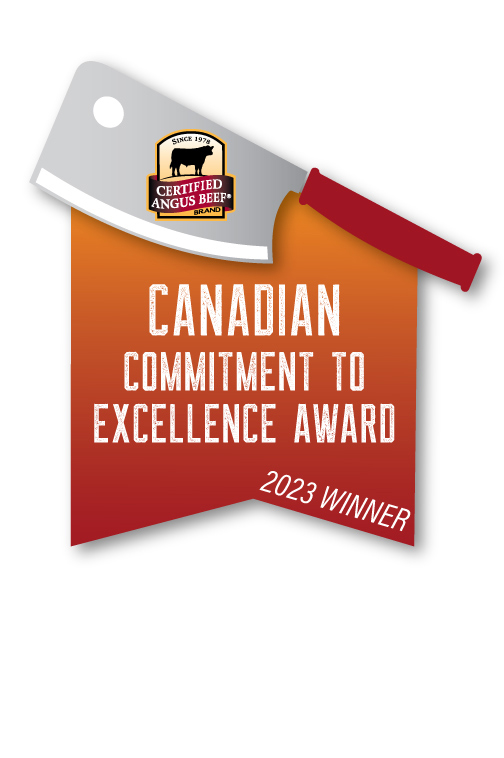
Topics: Association News , Award winner , Industry News , Sustainability , Pasture and Forage , Management
Publication: Angus Journal


